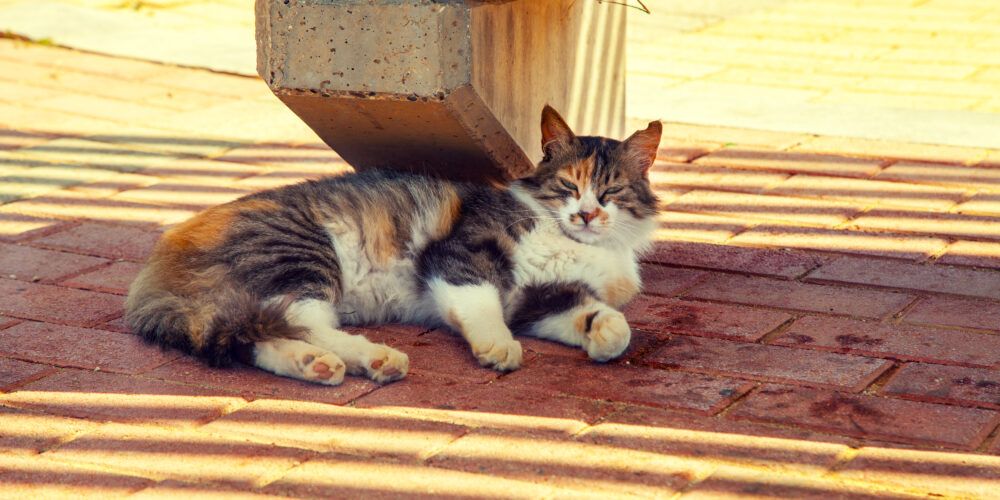Staying safe in the sun
Summer is here, and with the (hopefully!) warmer weather and longer days comes our latest round of tips for keeping your pet safe this season.
Preventing heatstroke and dehydration
• Pets can develop heatstroke (hyperthermia) when high environmental temperatures (like hot rooms, cars and gardens) mean they can no longer regulate their body temperature and it goes over its normal level.
• Symptoms include excessive, unusually fast panting, dark coloured (red or purple) gums and tongue, whining and signs of agitation, excessive thirst and drooling, glassy eyes, faster than normal pulse and heartbeat, high body temperature, staggering, collapsing and seizures.• Prevent it by avoiding walking your dog during the hottest times of day and skipping vigorous exercise completely – even fit, healthy dogs can suffer heatstroke at temperatures as low as 20C if doing vigorous exercise.
• Provide cool, well ventilated, shaded areas for pets, always give access to fresh water, take water with you on walks and spray down their coat with cool water.
• Avoid car journeys if possible and never leave your dog in a hot car.
• Elderly, obese, brachycephalic and large breed dogs are at higher risk of heatstroke, so consider staying indoors and ensure cool areas are available with ventilation.
• Excess or matted fur can also lead to heatstroke, so keep your pet well-groomed during summer.
• If you think your dog has heatstroke, please contact us immediately. In the meantime, shower or wet your dog with cool (not cold) water.
• Cats can suffer from heatstroke and will show similar signs. Cats don’t normally breathe through their mouths, so if they are panting, they have likely been exposed to high temperatures. If you think they may have heatstroke, get them into a cool spot, soak them with cool (not cold water) and contact us immediately.
• Heatstroke is also serious for rabbits, guinea pigs and hamsters. Always give these pets shelter from the sun, especially if confined to cages and runs, with lots of water in bottles and bowls. Look out for any breathing difficulties, faster breathing or seeming unusually sleepy or limp.
• If your pet is showing any signs of heatstroke, contact us immediately.
Water safety
• When introducing dogs to water, opt for a shallow children’s paddling pool first, and use a flotation device if they move on to slightly deeper water.
• Watch out for poisonous algae, make sure your dog doesn’t drink from standing water and rinse them thoroughly after swimming to remove any bacteria or chemicals.
Sunburn
• White pets and pets with fine, thin or no hair are at greater risk of getting sunburnt, but it’s important to protect exposed areas like the ears, nose and tummy on all pets with a pet friendly sun cream.
• Hot pavements can hurt paws! If it feels hot to your hand it will be the same for paws, so walk your dog at cooler times of day, walk them on grass where possible and check and clean their paws regularly.


